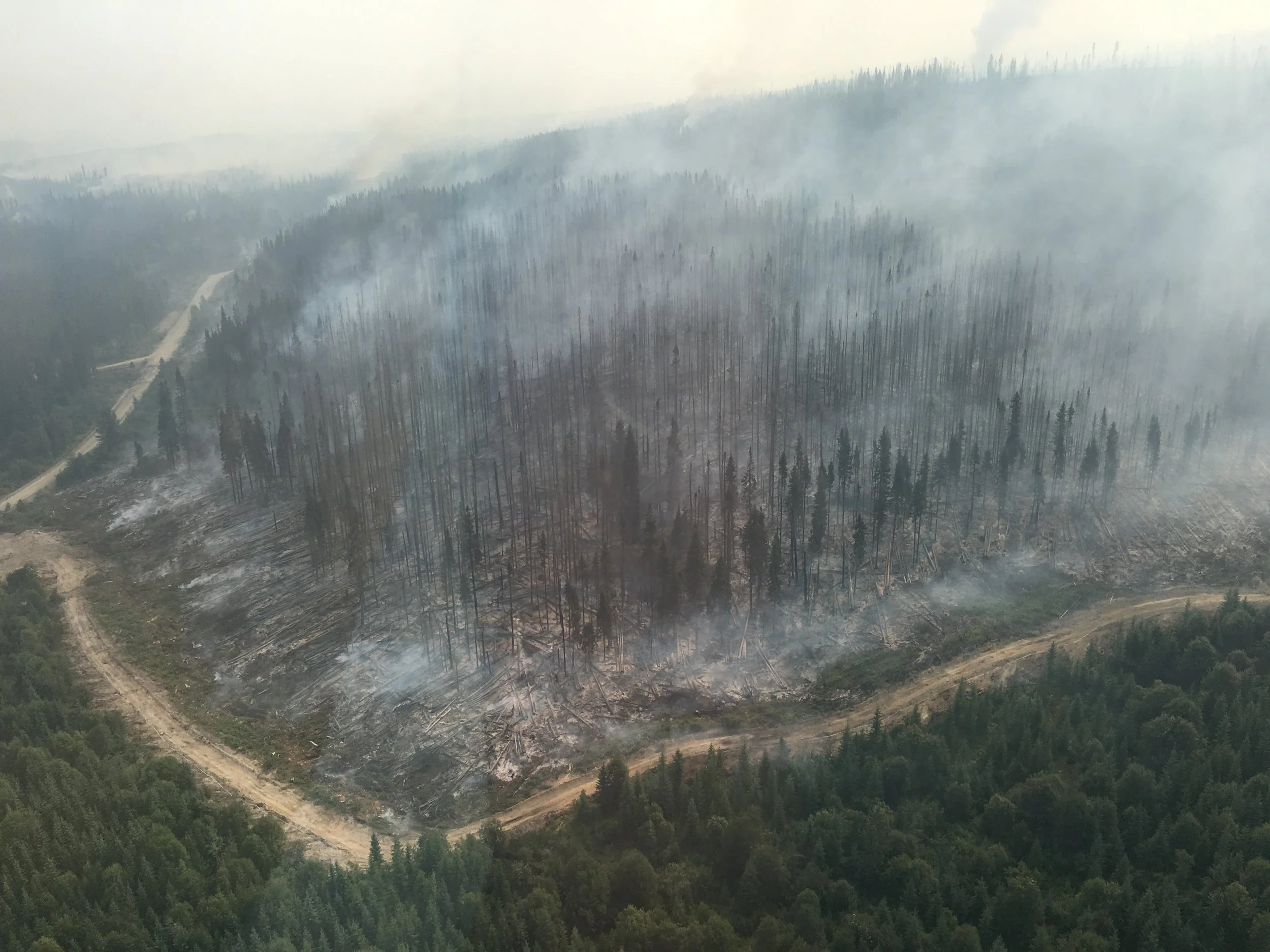Precedented: Our New Normal in Wildfire Seasons
Unprecedented.
That’s the word you’ll hear every fire season now. It gets tossed around so often—by headlines, politicians, and press releases—that when I see it, all I can think is how deeply it misses the point. Every year, they say the fires are worse than ever. But to wildland firefighters, it’s all starting to feel very precedented.
The climate is changing, and the numbers don’t lie. In the past decade, global temperatures have reached record highs, with average surface temperatures well above pre-industrial levels. Year after year, we’re seeing warmer seasons, longer droughts, and increasingly volatile fire conditions. These aren’t one-offs—they’re part of a growing trend.
I grew up in British Columbia’s Interior. Summers used to mean blue skies and long days at the lake. Now, smoke blankets the region for weeks, sometimes months. That was unheard of in my youth. It’s not an anomaly anymore. It’s the rhythm of the season.
While it’s true that predicting how severe a wildfire season will be isn’t an exact science, the time between intense years is shrinking. I recently asked a former colleague—a Wildfire Ranger—what he thought about the upcoming fire season. He said, “No wildfire season in Canada has ever been bad four years in a row. But this might be the first.” Is that where we’re at now? Crossing our fingers that at least one summer out of every four gives us a break.
But hoping for a break isn’t a strategy. Especially when the fire season now stretches well beyond summer. In a recent southern California wildfire, over 6,000 homes were destroyed and dozens of lives were lost—before the traditional season even began. Fires like that used to be outliers. Now, they're part of the pattern.
And yet, this is nothing new. When the fires are burning, they dominate the headlines. But once they’re out, the urgency to learn from them fades. Year after year, the cycle repeats.
So, with fire seasons changing at a pace we’ve never seen before, why aren’t our wildland firefighting programs changing at the same rate?
I spent 20 years on the frontlines of wildfires across Canada, the U.S., and Australia. What shocks me most is how far behind Canada has fallen. You might imagine a workforce of seasoned veterans mentoring the next generation, their bonds forged in the heat of the fireline. As romantic as that image is, it couldn’t be further from reality.
In Canada, most wildland firefighters don’t make it past their second season. The work is grueling, dirty, and relentless. While most Canadians enjoy their summers, these firefighters spend theirs cut off from their families and communities, sleeping in tents, and eating on the go.
Yes, there’s camaraderie, pride, and the thrill of the job. But there’s also low pay, no pension, no sick days, and seasonal uncertainty. For many, it’s a summer job that becomes a story to tell later. Only those who truly live for the wilderness—and are willing to sacrifice a conventional life—tend to stay longer.
The result? High turnover and a growing experience gap. There are veterans still out there, but they’re increasingly outnumbered by rookies, often led by crew leaders with only a few seasons under their belts. Fatalities, once rare and shocking, are becoming disturbingly common. I don’t think that’s a coincidence.
In recent years, Canada has seen its most destructive wildfire seasons on record. More than 17 million hectares burned in a single season. That’s an area larger than the entire province of Nova Scotia, nearly five times more than the ten-year average. This is what happens when experience is lost, programs remain underfunded, and the scale of the threat continues to outpace the system built to contain it.
You can pretend this isn’t real—but ask the people of Jasper, West Kelowna, Lytton, Fort McMurray, Slave Lake. Ask the hundreds of thousands whose lives have been turned upside down by wildfires in the past decade. They’ll tell you exactly how real it is.
If these severe fire seasons are now commonplace, then they’re not unprecedented. This is our new normal.
The system we once had for fighting wildfires worked—for a different time. But that system is now outdated. As the world changes, our approach needs to evolve to meet the reality we’re already living in.
So if we really want to see something unprecedented—how about this: Let’s stop treating wildland firefighters as disposable summer help. Let’s build a professional, year-round workforce. Let’s keep the knowledge, the experience, and the people who know how to protect us when it matters most.
Because the truth is simple:
You can have an experienced wildfire workforce or an underfunded one—but not both.
By investing in the future of wildland firefighters, we’re not just protecting forests and communities. We’re protecting those who protect us.
